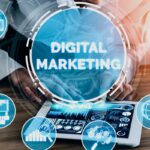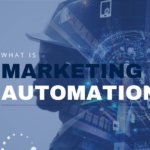Marketing optimization AI is revolutionizing how businesses approach their marketing strategies. But what exactly is marketing optimization AI, and how can it benefit your business? Let’s dive in and explore this game-changing technology.
What is Marketing Optimization AI?
Marketing optimization AI refers to the use of artificial intelligence technologies to enhance and streamline marketing processes. At its core, it’s about using machine learning algorithms and data analysis to make more informed, data-driven decisions in your marketing efforts.
The key objectives of marketing optimization AI are:
- Personalization: Deliver tailored experiences to each customer
- Cost-effectiveness: Maximize ROI by allocating resources efficiently
- Improved user engagement: Create more relevant and compelling marketing content
- Data-driven decision making: Base strategies on solid data rather than guesswork
By leveraging AI, businesses can create more effective, efficient, and targeted marketing campaigns that resonate with their audience and drive better results.
The Impact of AI on Marketing Optimization
Artificial Intelligence has dramatically transformed the marketing landscape, offering unprecedented opportunities for optimization. By leveraging vast amounts of data and complex algorithms, AI enables marketers to:
- Analyze customer behavior with incredible precision
- Automate repetitive tasks, freeing up time for strategic thinking
- Personalize marketing messages at scale
- Predict trends and customer actions before they happen
This shift towards AI-driven marketing optimization is not just a trend—it’s a fundamental change in how businesses approach their marketing efforts.
Benefits of AI in Marketing Optimization
Implementing AI for marketing optimization offers several key advantages as listed below:
- Data-driven insights: AI analyzes vast amounts of customer data to identify patterns and predict behaviors, enabling more informed marketing decisions.
- Improved ROI: By optimizing budget allocation and campaign efficiency, AI helps maximize return on marketing investments.
- Enhanced personalization: AI enables hyper-targeted content and interactions, improving customer engagement and satisfaction.
- Real-time adaptability: AI continuously monitors campaign performance, making instant adjustments to maintain peak efficiency.
- Scalability: AI manages complex, multi-channel campaigns at a scale beyond human capacity, allowing for more comprehensive optimization.
Now that we understand the benefits, let’s explore how to design and implement an AI-driven marketing optimization strategy.
Steps to Design AI-Driven Marketing Optimization Strategy
Before we dive into the specifics, it’s important to note that each step builds upon the previous one, creating a comprehensive framework for success. Let’s start with the foundation of any AI-driven strategy: data.
Step 1: Gather and Create Trustworthy Data
The foundation of any successful marketing optimization AI strategy is high-quality, reliable data. Here’s how to ensure you’re working with trustworthy data:
- Audit your current data sources: Identify all your data collection points and assess the quality and relevance of the data they provide.
- Establish accurate data collection and measurement practices:
- Implement robust tracking systems across all your digital properties
- Use tools like Google Analytics and Maino’s cross-platform ad management to gather comprehensive data
- Ensure consistent naming conventions and tagging across all campaigns and channels
- Aggregate, clean, and preprocess your data:
- Combine data from multiple sources into a central repository
- Remove duplicates and correct errors
- Normalize data formats for consistency
Remember, the quality of your AI insights is directly dependent on the quality of your input data. Investing time in this step will pay dividends later.
With a solid data foundation in place, it’s time to make sense of this information using powerful analytical tools.
Step 2: Utilize Business Intelligence for Pattern Recognition
With clean, reliable data in hand, it’s time to leverage business intelligence (BI) tools to identify patterns and trends:
- Implement robust BI tools: Choose software that can handle large datasets and provide clear visualizations. Tools like Tableau or PowerBI can be excellent choices.
- Analyze historical performance: Look for patterns in your past marketing efforts. Which campaigns performed best? What channels delivered the highest ROI?
- Identify correlations: Discover relationships between different variables. For example, how does seasonality affect your campaign performance?
- Move beyond historical data: While historical analysis is valuable, use your BI tools to also identify emerging trends and potential future opportunities.
Now that we’ve identified patterns in our historical data, it’s time to leverage AI to predict future customer behavior.
Step 3: Predict Customer Behavior with AI
This is where marketing optimization AI really shines. Use AI models to forecast future customer behavior based on historical data and current trends:
- Segment your audience: Use AI clustering algorithms to group customers based on shared characteristics and behaviors.
- Predict churn: Identify customers at risk of leaving and take proactive measures to retain them. AI can analyze patterns in customer behavior to flag potential churn before it happens.
- Score leads: Prioritize your sales efforts by focusing on leads most likely to convert. AI can analyze numerous factors to provide accurate lead scores.
- Forecast customer lifetime value: Use AI to predict which customers will be most valuable in the long term, allowing you to allocate resources accordingly.
Understanding customer behavior is crucial, but it’s equally important to allocate our resources effectively. Let’s explore how AI can optimize our budget and channel allocation.
Step 4: Maximize Budget and Channel Allocation
One of the most powerful applications of marketing optimization AI is in budget allocation:
- Implement marketing mix modeling (MMM): Use AI to understand the impact of different marketing channels on your overall performance. MMM helps you optimize your channel mix for maximum impact.
- Continuously refine expenditure: Let AI algorithms reallocate your budget in real-time based on performance data. This ensures you’re always investing in the most effective channels.
- Identify underperforming channels: Quickly spot areas where you’re overspending and redirect resources to more effective channels.
- Optimize for cross-channel effects: AI can help you understand how different channels interact and influence each other, allowing for more holistic optimization.
With our budget optimized, we can now focus on identifying and replicating our most successful marketing initiatives.
Step 5: Select High-Performing Campaigns
Not all marketing campaigns are created equal. Use marketing optimization AI to identify and double down on your most successful initiatives:
- Analyze historical performance: Use AI to identify patterns in your most successful past campaigns. What elements did they have in common?
- Predict future performance: Leverage predictive models to forecast how new campaigns are likely to perform before you launch them.
- A/B test at scale: Use AI to run and analyze multiple variations of your campaigns simultaneously, identifying the most effective elements quickly.
- Optimize campaign elements: Use AI to fine-tune individual components of your campaigns, from ad copy to images to landing pages.
By focusing on high-performing campaigns, you’ll maximize your ROI and avoid wasting resources on ineffective strategies.
Creating high-quality content at scale is often a challenge for marketers. Let’s see how generative AI can revolutionize our content creation process.
Step 6: Use Generative AI for Content Creation
Content creation is often a bottleneck in marketing campaigns. Generative AI can help you produce high-quality, personalized content at scale:
- Generate ideas: Use AI to brainstorm content topics and angles based on trending topics and customer interests.
- Create personalized copy: Develop tailored ad copy, email subject lines, and product descriptions for different customer segments.
- Design visual assets: Use AI-powered tools to create eye-catching graphics and videos for your campaigns.
- Optimize content for different channels: AI can help adapt your content for various platforms, ensuring it performs well wherever it’s published.
Let’s look at some real-world examples of how generative AI is revolutionizing content creation:
- Email Marketing: Phrasee, an AI-powered copywriting tool, helped Virgin Holidays increase their email open rates by 2% and click-through rates by 10%. The AI generated subject lines and email content that outperformed human-written versions.
- Social Media Content: Socialbakers used AI to analyze top-performing content across various industries and generate data-driven content ideas. This resulted in a 50% increase in engagement rates for their clients.
- Product Descriptions: Alibaba’s AI copywriter can generate 20,000 lines of content per second. In a test, it created product descriptions that were indistinguishable from those written by humans.
Step 7: Test, Learn, and Optimize
The power of marketing optimization AI lies in its ability to continuously learn and improve. Embrace a culture of ongoing testing and optimization:
- Set up automated A/B tests: Use AI to continuously test different elements of your campaigns, from email subject lines to ad creatives.
- Monitor performance in real-time: Leverage AI-powered dashboards to keep track of your KPIs and spot trends as they emerge.
- Implement automated optimizations: Allow AI to make data-driven adjustments to your campaigns on the fly, ensuring peak performance at all times.
- Adapt proactively to market trends: Use AI’s predictive capabilities to anticipate shifts in customer behavior or market conditions, allowing you to adjust your strategy before your competitors.
- Build a learning loop: Use insights from each campaign to inform and improve future efforts, creating a continuously improving marketing system.
Remember, marketing optimization AI is not a “set it and forget it” solution. It requires ongoing attention and refinement to deliver the best results.
Addressing Common Misconceptions About Marketing Optimization AI
As you embark on your AI-driven marketing journey, you might encounter some skepticism or misconceptions. Let’s address a few common concerns:
- “Marketing optimization AI means increased spending.”
Reality: While there may be initial investment in AI tools, the goal is to improve efficiency and ROI.
Example: Harley-Davidson NYC used Albert, an AI marketing platform, to optimize their ad spend. The result? A 2930% increase in sales leads and a 40% reduction in cost per lead. - “AI will replace human marketers.”
Reality: AI is a tool that enhances human creativity and decision-making, not a replacement for human expertise.
Example: When The Washington Post implemented Heliograf, an AI content creation tool, they didn’t lay off journalists. Instead, they used it to cover minor league sports and local news, expanding their content offerings. - “Implementing AI is too expensive for small businesses.”
Reality: There are AI-powered marketing tools available for businesses of all sizes. Example: Mailchimp, a popular email marketing platform for small businesses, introduced AI-powered features like send time optimization and content recommendations without significantly increasing their pricing. - “AI-driven marketing feels impersonal.”
Reality: When used correctly, marketing optimization AI enables more personalized, relevant experiences for customers.
Example: Stitch Fix, an online personal styling service, uses AI to analyze customer preferences and feedback to provide highly personalized clothing recommendations.
Conclusion: Embrace the Future of Marketing with AI
Marketing optimization AI represents the cutting edge of marketing technology, offering unprecedented opportunities for businesses to improve their marketing effectiveness and efficiency. By leveraging predictive analytics and machine learning, companies can create forward-thinking strategies that anticipate customer needs and market trends.
The power of marketing optimization AI lies in its ability to:
- Process vast amounts of data to uncover insights humans might miss
- Predict future trends and customer behaviors with remarkable accuracy
- Continuously learn and improve, creating a self-optimizing marketing system
- Enable truly personalized marketing at scale
As we’ve seen, implementing an AI-driven marketing optimization strategy involves several key steps, from ensuring data quality to embracing continuous testing and learning. While the journey may seem daunting, the potential rewards in terms of improved ROI, enhanced customer satisfaction, and competitive advantage are enormous.
The future of marketing is here, and it’s powered by AI. Are you ready to take your marketing to the next level? Maino offers cutting-edge marketing optimization AI solutions tailored for e-commerce and B2B businesses. From cross-platform ad management to AI-generated creative content, we have the tools you need to stay ahead of the competition.













